SaniPath
a project to access the risk of exposure to fecal contamination through multiple environmental pathways in urban communities
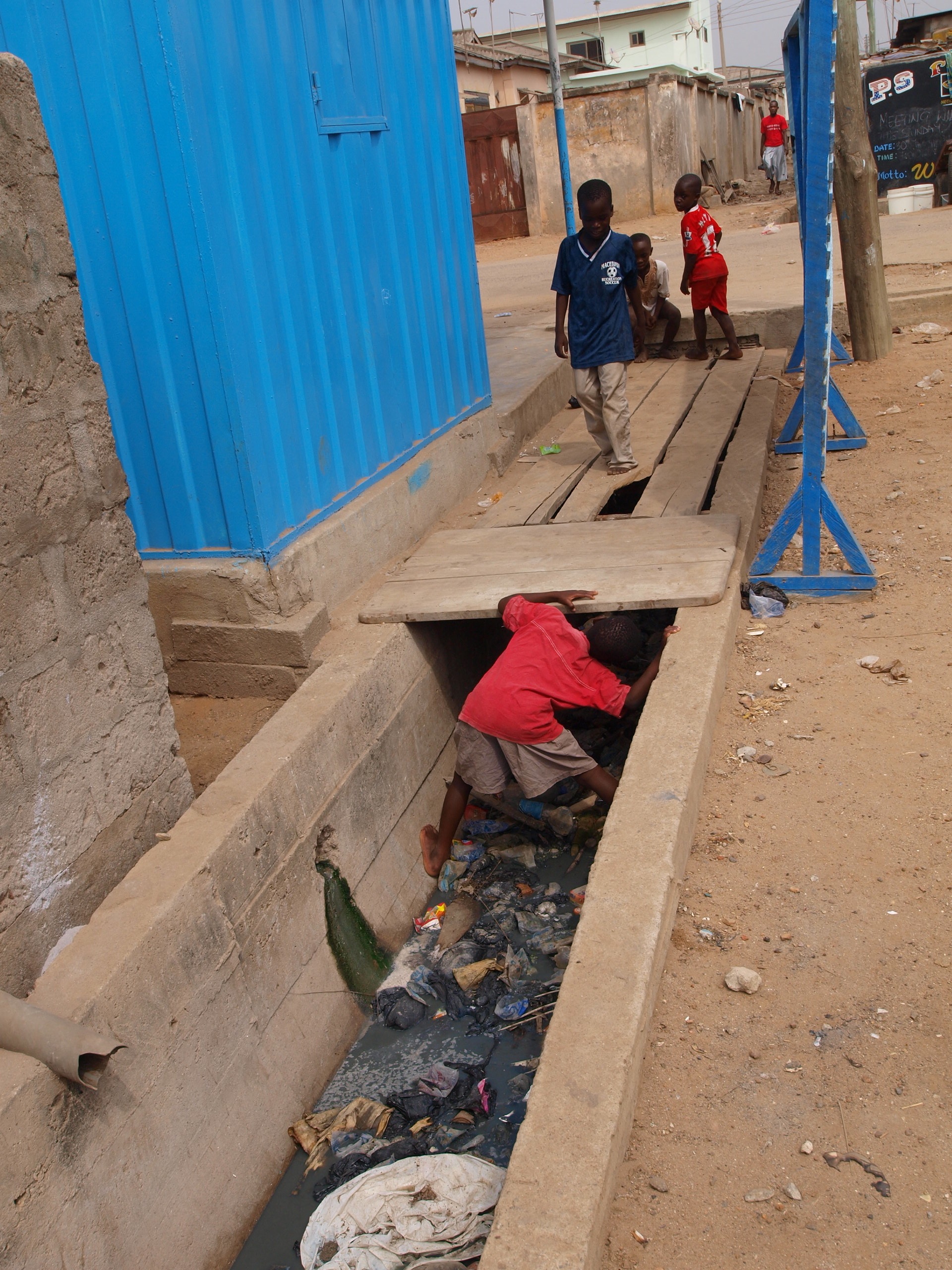
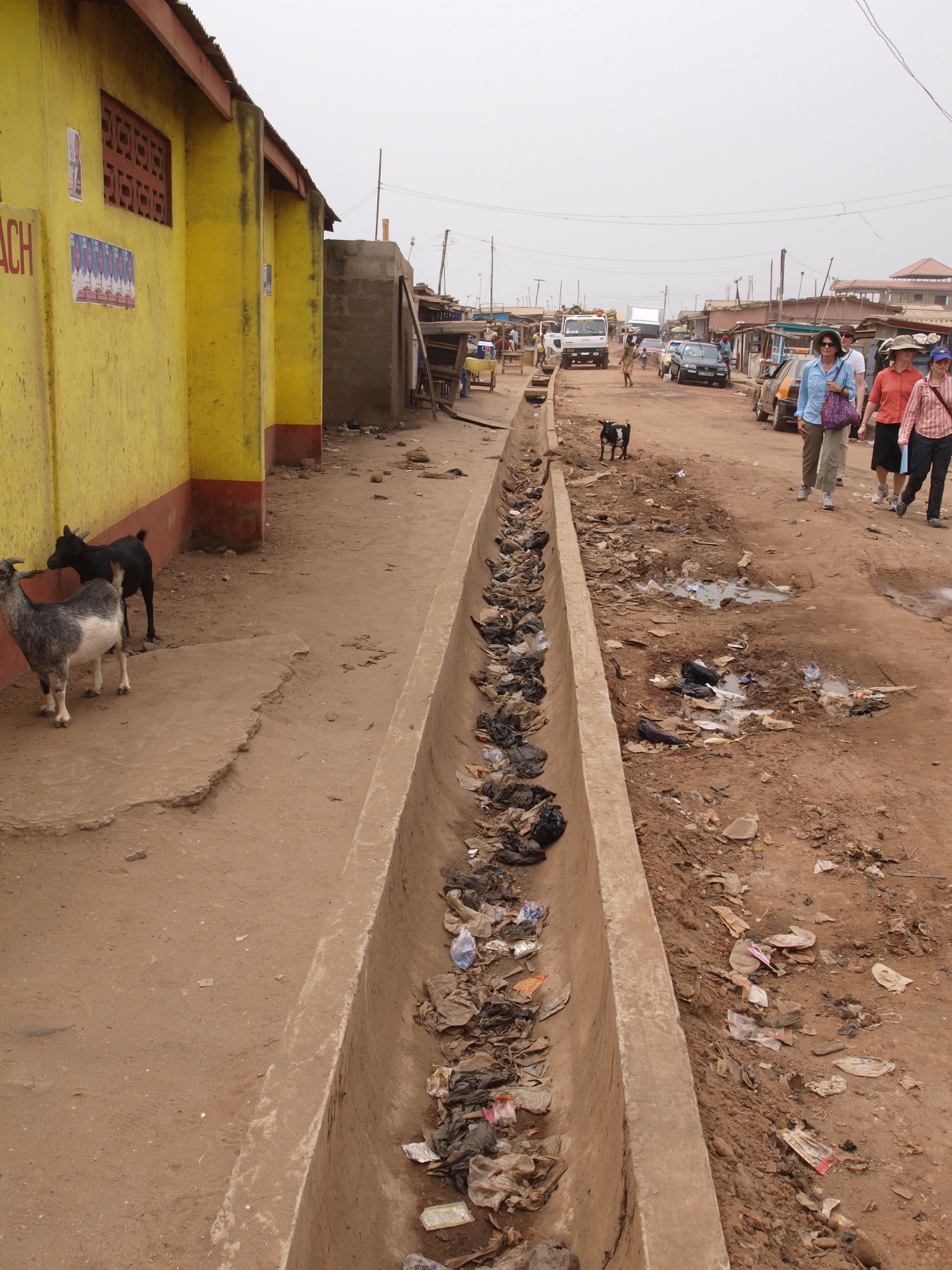
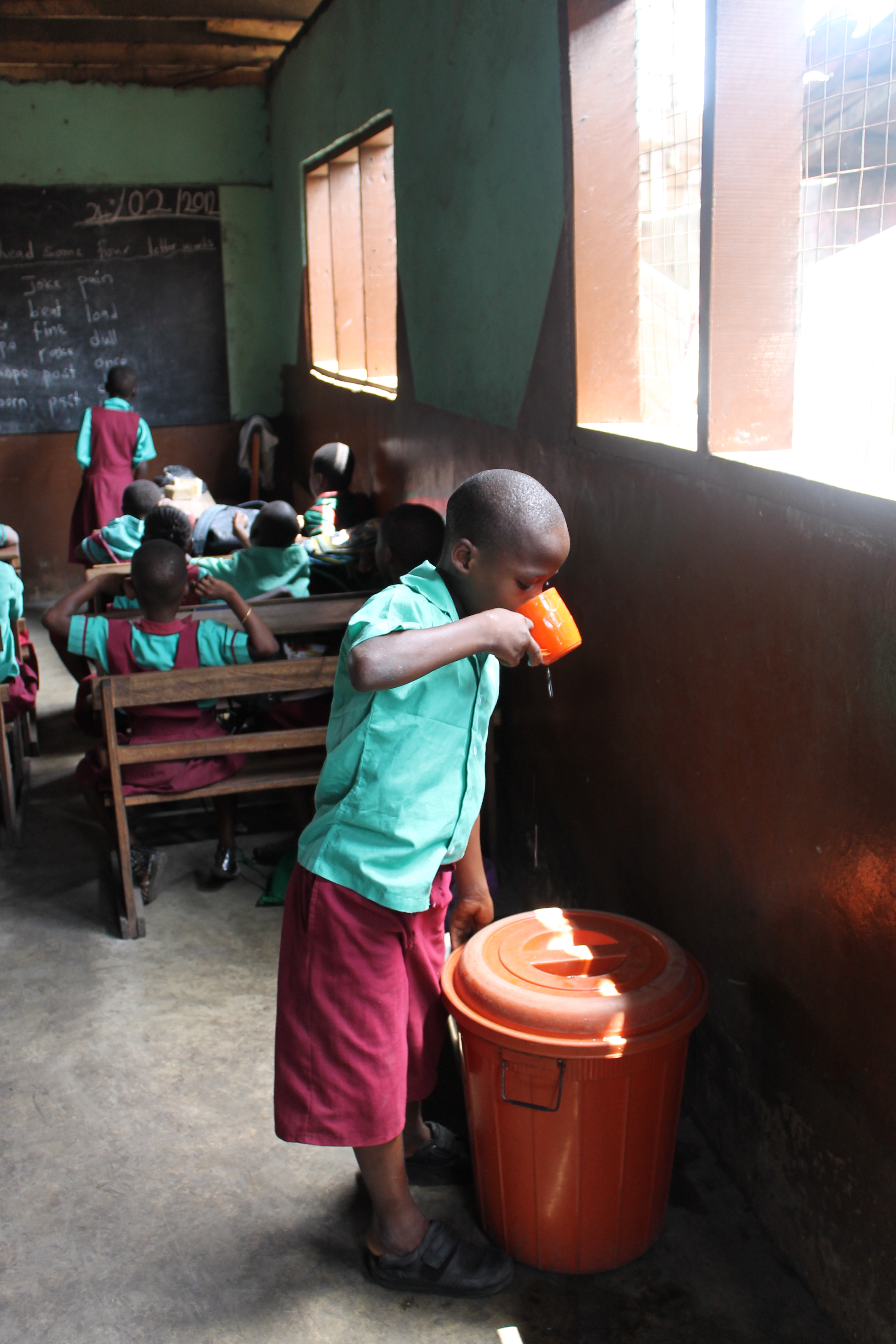
Phase 1
Development of SaniPath Exposure Accessment Approach in Accra, Ghana
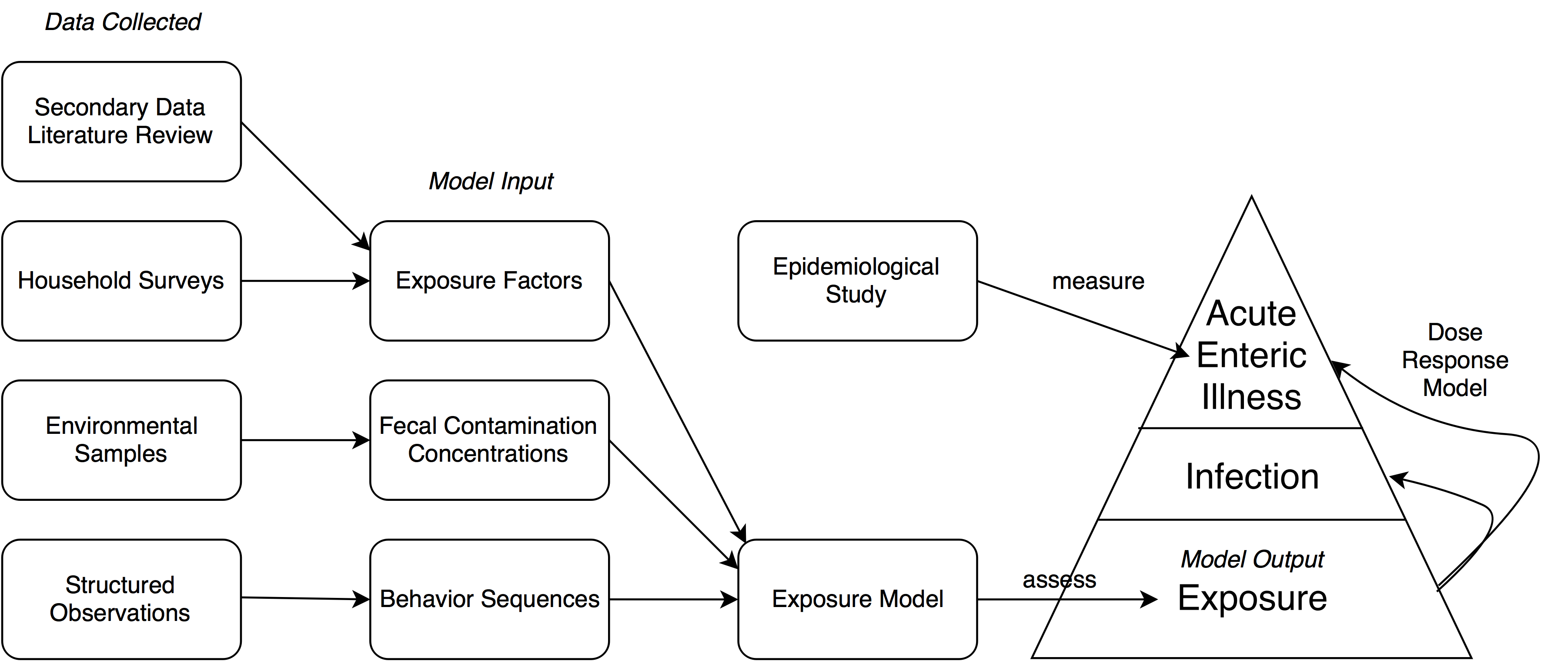
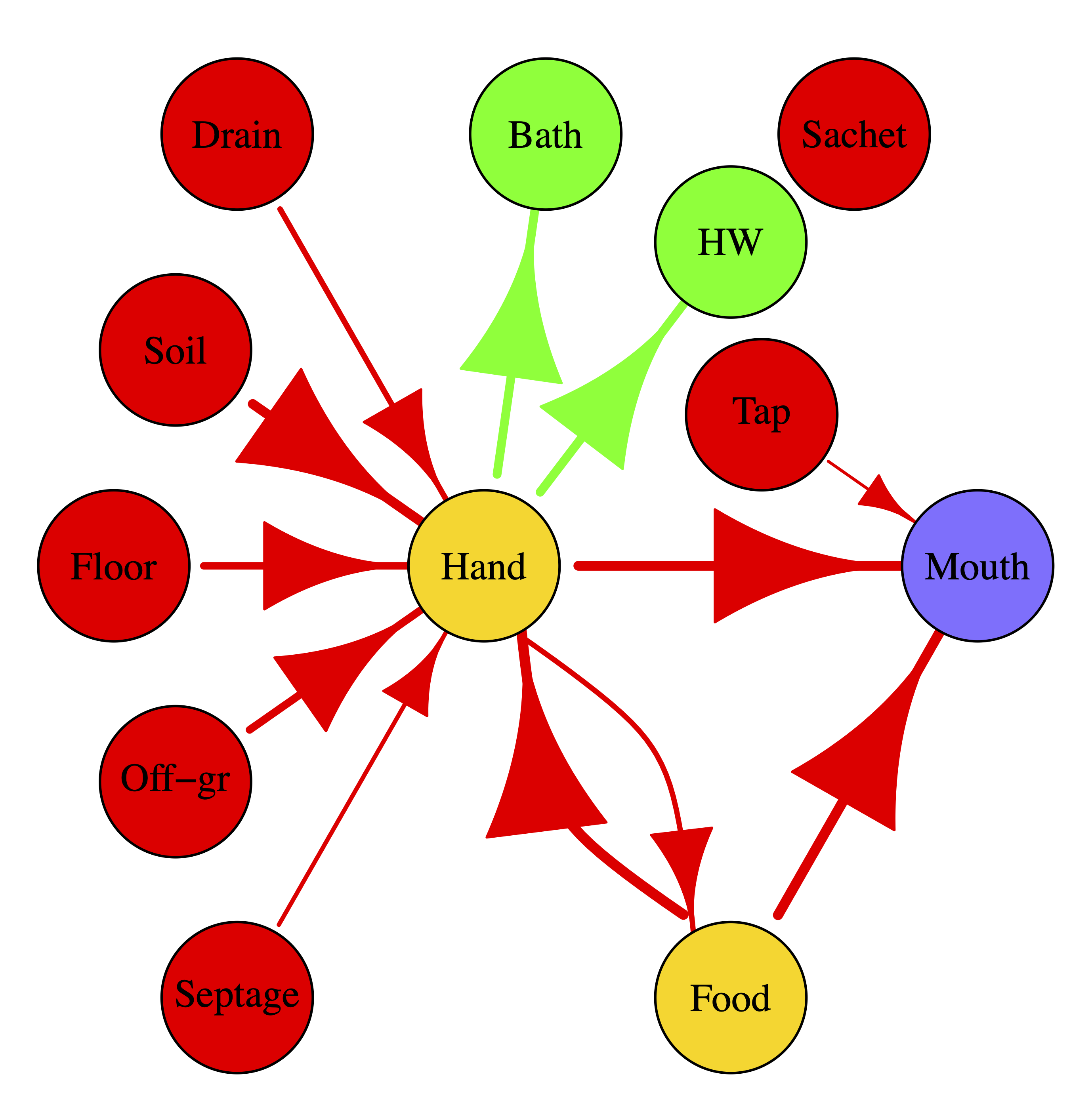
Unsafe fecal sludge management results in widely distributed fecal contamination in the urban environment and poses a risk of disease transmission via multiple exposure pathways. To better understand how different environmental sources contribute to overall exposure to fecal contamination, we quantified exposure through multiple pathways for children under 5 years old in four high-density, low-income, urban neighborhoods in Accra, Ghana. We collected more than 500 hours of structured observation of behaviors of 156 children, 800 household surveys, and 1,855 environmental samples. Data were analyzed using Bayesian models, estimating the environmental and behavioral factors associated with exposure to fecal contamination. These estimates were applied in exposure models simulating sequences of behaviors and transfers of fecal indicators. This approach allows us to identify the contribution of any sources of fecal contamination in the environment to child exposure and use dynamic fecal microbe transfer networks to track fecal indicators from the environment to oral ingestion. The contributions of different sources to exposure were categorized into four types (high/low by dose and frequency), as a basis for ranking pathways by the potential to reduce exposure. Although we observed variation in estimated exposure (108–1016 CFU/day for Escherichia coli) between different age groups and neighborhoods, the greatest contribution was consistently from food (contributing > 99.9% to total exposure). Hands played a pivotal role in fecal microbe transfer, linking environmental sources to oral ingestion. The fecal microbe transfer network constructed here provides a systematic approach to study the complex interaction between contaminated environment and human behavior on exposure to fecal contamination. Details of the exposure assessment results were published in the American Journal of Tropical Medicine and Hygiene (Wang et al. 2017). Details of the models for children under five behavior sequence and multiple pathway exposure assessment were published in the American Journal of Tropical Medicine and Hygiene (Teunis et al. 2016) and Risk Analysis (Wang et al. 2018).
Please check our SaniPath website for more information.
Phase 2
Development of SaniPath Exposure Accessment Tool
The SaniPath Exposure Assessment Tool, was developed by the Center for Global Safe WASH at Emory University to identify and compare risk of exposure to fecal contamination across multiple exposure pathways associated with inadequate sanitation and fecal sludge management. This approach follows the framework for quantitative microbial risk assessment, with an emphasis on hazard identification, exposure assessment, risk characterization, and risk management. The Tool provides guidance for standardized primary data collection, automates the exposure assessment analysis, and visualizes the results in a way that is accessible and understandable to people with a variety of backgrounds. It enables users to develop a robust evidence base for advocacy and decision making in the WASH sector. The Tool is free and open access for all, including those who may want to use it or further improve and build upon it.
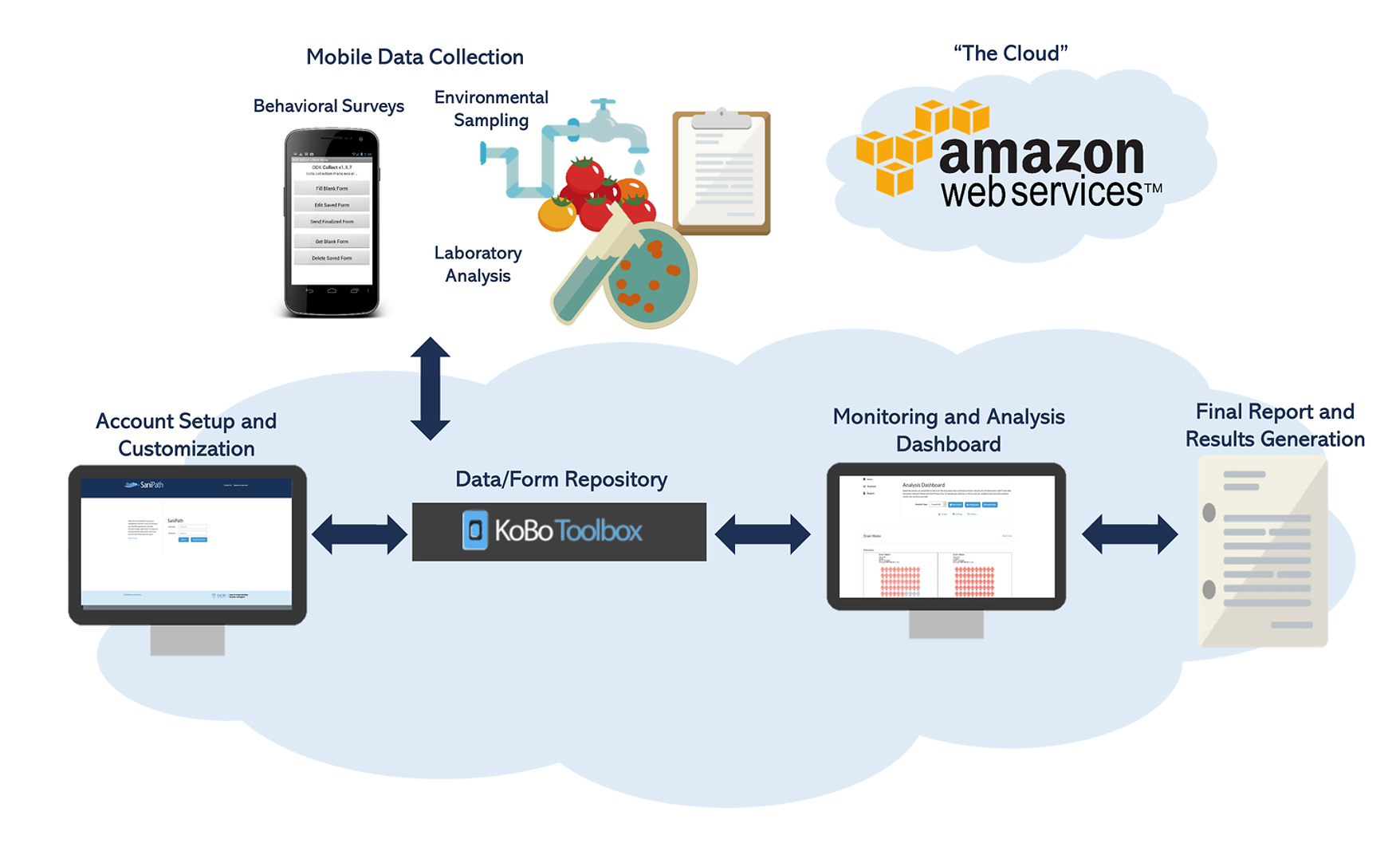
The SaniPath web-platform was developed in conjunction with EpiTech Consulting to manage and monitor data collection and visualize data. The platform is integrated with KoBo Toolbox and data are collected via downloadable mobile forms and uploaded to a SaniPath server. An analytical dashboard automatically retrieves data from the server and performs the exposure analysis on a daily basis. From the dashboard, the user can view pie charts, histograms, and People Plots and automatically generate a draft final report. Details of the SaniPath Tool were published in PLoS One (Raj et al., 2020).
Please check the SaniPath wikipedia and SaniPath Tool youtube videos for more information about how to use the SaniPath Tool.
Phase 3
Deployment of SaniPath Tool in Ten Cities across the Globe
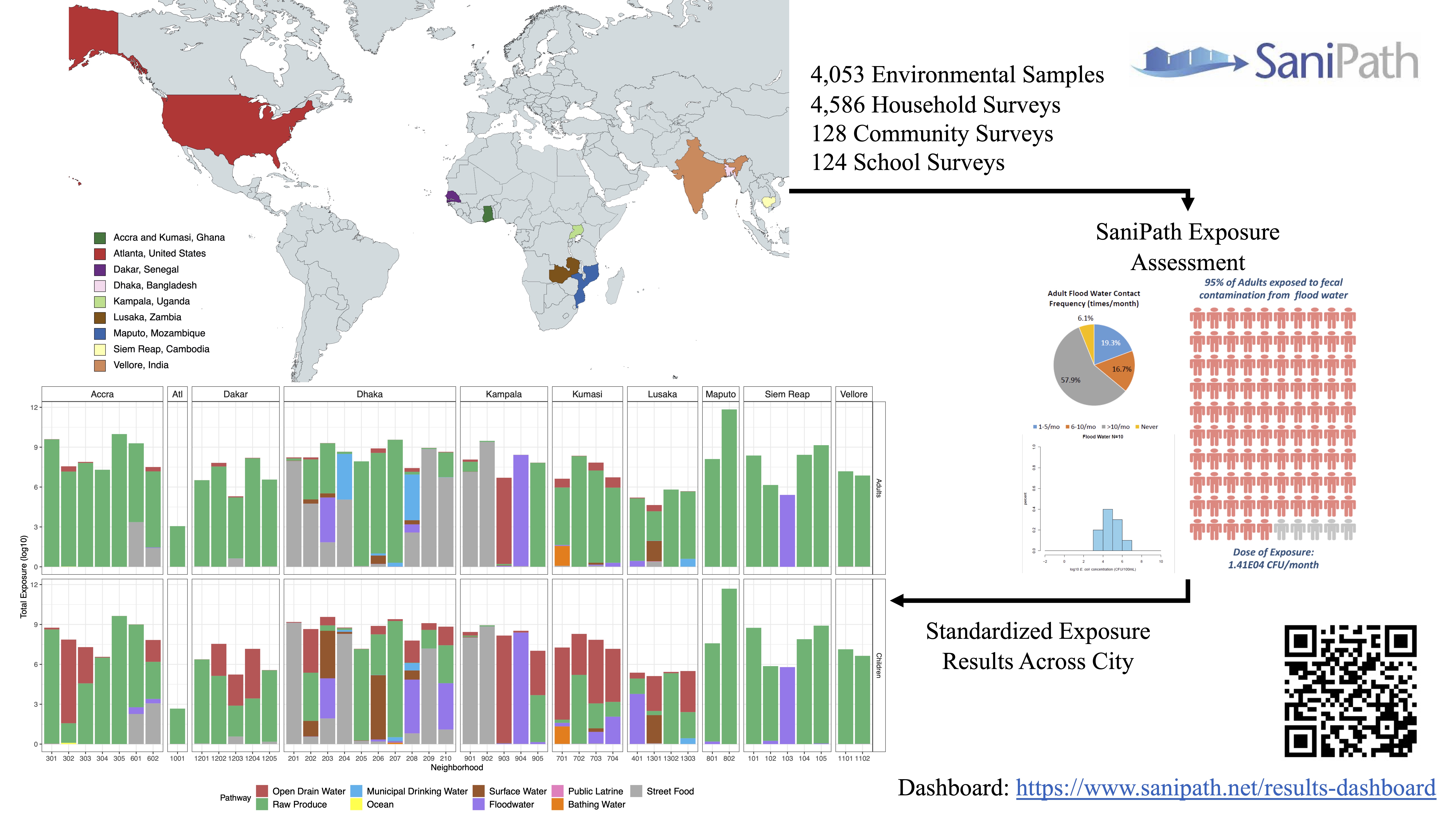
During 2014 to 2019, the SaniPath Exposure Assessment Tool, a standardized set of methods to evaluate risk of exposure to fecal contamination in the urban environment through multiple exposure pathways, was deployed in 45 neighborhoods in ten cities, including Accra and Kumasi, Ghana; Vellore, India; Maputo, Mozambique; Siem Reap, Cambodia; Atlanta, United States; Dhaka, Bangladesh; Lusaka, Zambia; Kampala, Uganda; Dakar, Senegal. The objective of this study is to assess and compare risk of exposure to fecal contamination via multiple pathways in ten cities. In total, 4053 environmental samples, 4586 household surveys, 128 community surveys, and 124 school surveys were collected. E. coli concentrations were measured in environmental samples as an indicator of fecal contamination magnitude. Bayesian methods were used to estimate the distributions of fecal contamination concentration and contact frequency. Exposure to fecal contamination was estimated by the Monte Carlo method. The contamination levels of ten environmental compartments, frequency of contact with those compartments for adults and children, and estimated exposure to fecal contamination through any of the surveyed environmental pathways were compared across cities and neighborhoods. Distribution of fecal contamination in the environment and human contact behavior varied by city. Universally, food pathways were the most common dominant route of exposure to fecal contamination across cities in low-income and lower-middle-income countries. Risks of fecal exposure via water pathways, such as open drains, flood water, and municipal drinking water, were site-specific and often limited to smaller geographic areas (i.e., neighborhoods) instead of larger areas (i.e., cities). Knowledge of the relative contribution to fecal exposure from multiple pathways, and the environmental contamination level and frequency of contact for those “dominant pathways” could provide guidance for Water, Sanitation, and Hygiene (WASH) programming and investments and enable local governments and municipalities to improve intervention strategies to reduce the risk of exposure to fecal contamination. Details of this study were published in the Science of the Total Environment Wang et al. 2021.
The results of the SaniPath multi-city exposure assessment is available in our dashboard.